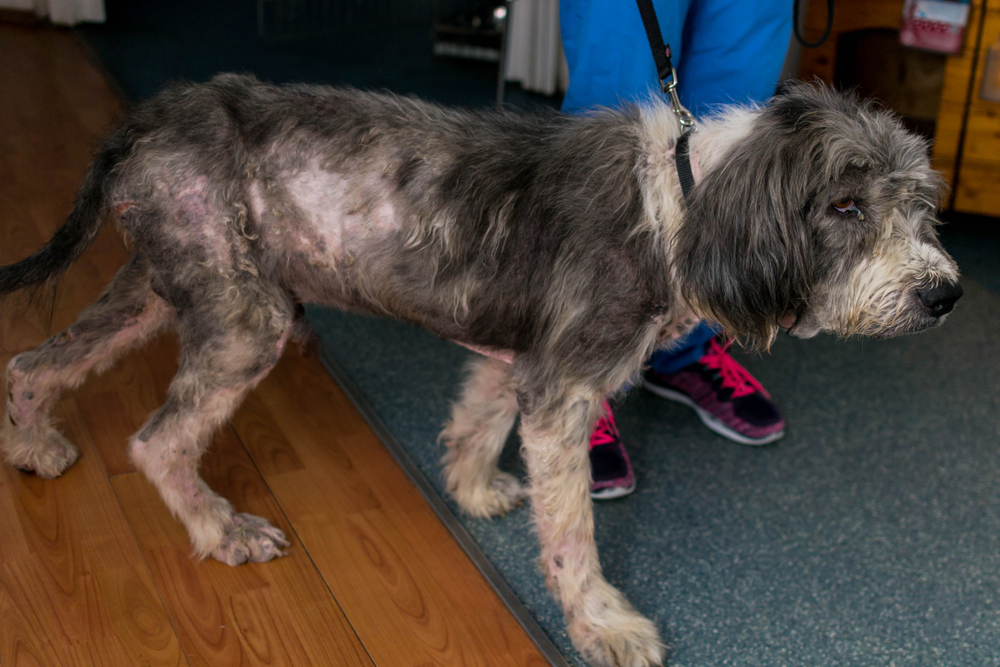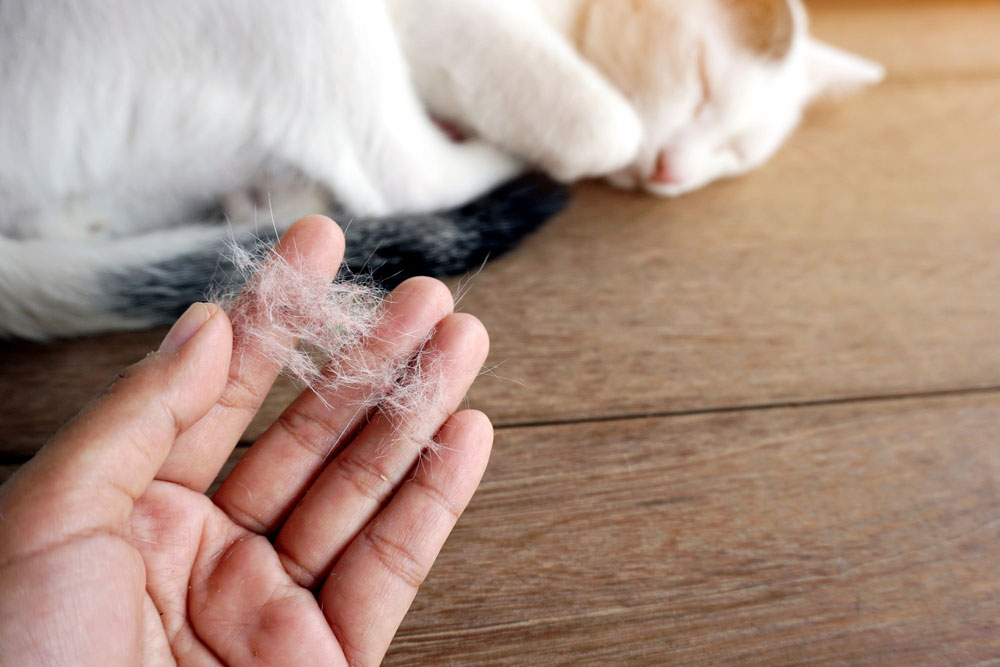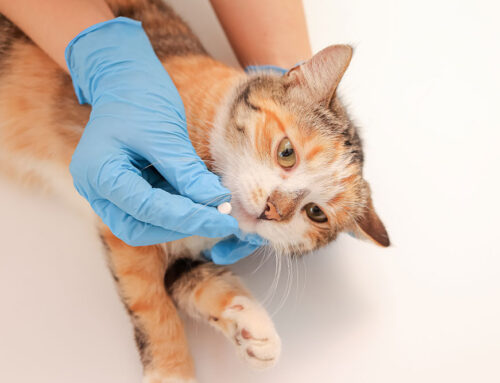When the Fur Starts Falling: What Hair Loss Reveals About Your Pet’s Health
Hair loss in pets isn’t just cosmetic; it’s often a sign of an underlying issue. From allergies and parasites to hormonal imbalances, many conditions can cause thinning coats or bald patches. Identifying the root cause is key to restoring both skin health and comfort.
At WesVet Animal Hospital, our family-owned Nashville practice combines compassionate care with advanced diagnostics to uncover why your pet is losing hair. Our dermatology specialists and in-house testing capabilities allow us to pinpoint the cause quickly and develop tailored treatment plans that bring relief and restore your pet’s healthy shine.
What Is Alopecia and Why Does It Happen to Pets?
Alopecia is the medical term for partial or complete hair loss, which can stem from irritation, hormonal imbalances, parasites, infections, or even stress. While normal shedding is expected during seasonal changes, bald patches, persistent itching, or sudden thinning deserve veterinary attention.
Hair loss (alopecia) may appear anywhere on the body and often includes redness, scaling, or odor. Cats may overgroom, leaving smooth bald spots on their belly or legs. Recognizing these patterns helps veterinarians determine the underlying cause.
Alopecia is a symptom, not a diagnosis. A comprehensive veterinary evaluation is essential to identify and address the true reason for your pet’s hair loss.
Why Is Your Pet Losing Hair? Common Causes Explained
Hair loss can have many causes, each requiring a different treatment approach. These are the most common culprits.
Allergies: A Leading Trigger for Itching and Hair Loss in Pets
Allergies are among the most frequent causes of hair loss in dogs and cats. Pets can react to pollen, dust, food ingredients, or flea saliva. When exposed, their immune system overreacts, causing inflammation, itching, and hair loss from scratching or chewing.
Dogs often develop hot spots on their paws, ears, and belly. Cats may overgroom and create symmetrical bald patches on the abdomen or inner thighs. Allergies vary by allergen, but redness, ear infections, and constant licking are common.
Parasites and Skin Infections in Pets
Fleas, mites, and fungal infections such as ringworm can cause patchy hair loss and skin irritation. Even indoor pets can become infected through exposure to other animals or contaminated environments.
Spotting and treating mites in pets requires close examination, as mites are too small to see with the naked eye. Mange caused by sarcoptic mites leads to intense itching and crusty skin, while demodectic mange causes patchy hair loss with minimal itchiness.
Flea allergy can be severe and just one bite may trigger intense itching. Consistent prevention protects against fleas, ticks, and other parasites that can damage the skin and coat.
Ringworm, a fungal infection, creates circular bald patches with scaly edges. Diagnosis may include skin scrapings, cultures, or cytology. Treatment often combines medicated baths, topical antifungals, and oral medication.
Hormonal Imbalances and Endocrine Disorders in Pets
Symmetrical, non-itchy hair loss often points to hormonal disorders. These conditions disrupt the hair growth cycle and can also cause changes in weight or skin texture.
- Hypothyroidism in dogs slows metabolism, leading to lethargy, weight gain, and dull, thinning fur along the trunk and tail.
- Cushing’s disease in dogs occurs when the adrenal glands produce too much cortisol. Treatment helps restore balance, easing symptoms like thinning skin, a rounded belly, and hair loss.
- Canine testicular tumors may also cause hormone imbalances, resulting in hair loss and feminization in male dogs.
Because these issues affect multiple systems, blood work is essential. Blood work helps detect imbalances early and can guide effective treatment.
Genetic Conditions That Affect Certain Breeds of Dogs
Some breeds are predisposed to inherited alopecia. Color dilution alopecia in dogs affects blue, silver, or fawn coats, causing brittle fur and bald spots by age two. Canine flank alopecia leads to symmetrical hair loss along the sides, often recurring seasonally in breeds like Boxers or Bulldogs. These conditions are managed with supportive skin care rather than cured outright.
Stress and Anxiety: The Role of Overgrooming in Dogs
Cats are prone to psychogenic alopecia, where stress leads to obsessive grooming. Triggers include new pets, moving homes, or schedule changes. Affected cats create bald patches on their belly or legs, often without inflammation.
Treatment may include environmental enrichment, pheromone therapy, or anti-anxiety medication. Providing scratching posts, vertical spaces, and consistent routines helps reduce anxiety and restore healthy grooming behavior.
Nutrition and Grooming Habits in Pets
Poor nutrition, harsh shampoos, or infrequent grooming can all harm coat quality. Diets lacking essential fatty acids or protein cause brittle, dull hair that breaks easily. Over-bathing strips natural oils and dries the skin. Regular grooming can support a healthy coat and skin barrier in pets.
Diagnosing the Cause of Hair Loss in Your Pet
At WesVet Animal Hospital, our veterinary services include complete dermatologic evaluations and in-house diagnostic testing to identify the cause quickly and accurately.
A typical workup may include:
- Physical examination of the skin and affected areas
- Skin scrapings for parasites
- Cytology to check for bacteria or yeast
- Fungal cultures to confirm ringworm
- Blood work for thyroid, adrenal, or liver function
- Allergy testing or diet trials for food sensitivities
Our experienced veterinarians, including Dr. Dobbs and Dr. Hays, combine their medical and surgical expertise to interpret results and design customized treatment plans for every pet.
Treatment Options That Restore Healthy Coats in Pets
Once the cause is identified, we create a treatment plan tailored to your pet’s needs. Common approaches include:
- Allergies: Medicated shampoos, prescription diets, antihistamines, or immunotherapy
- Parasites: Prescription preventives and environmental control
- Hormonal disorders: Hormone supplementation or medications to restore balance
- Infections: Antibiotics, antifungals, or topical therapy
- Stress-related grooming: Behavior modification, enrichment, and pheromone therapy
Many conditions require ongoing management. Our team monitors your pet’s progress closely, adjusting treatment as needed and supporting you every step of the way.
Preventing Hair Loss Before It Starts in Pets
While not all hair loss is preventable, regular veterinary care can catch early signs before they worsen. Protect your pet’s coat health by:
- Maintaining year-round parasite prevention
- Feeding a high-quality, nutrient-rich diet
- Brushing regularly to distribute natural oils
- Using gentle, pet-safe grooming products
- Scheduling routine wellness exams for early detection

When to Seek Veterinary Care for Hair Loss in Pets
If your pet develops bald patches, persistent itching, redness, or coat texture changes, schedule a visit. Early evaluation can stop the cycle of discomfort and help your pet recover quickly.
At WesVet Animal Hospital, we offer same-day appointments for urgent concerns and provide compassionate, high-quality care backed by advanced diagnostics. Whether your pet needs routine wellness care or emergency attention for severe symptoms, our team is here to help. Contact us today or schedule an appointment to restore your pet’s comfort and coat health.







Leave A Comment